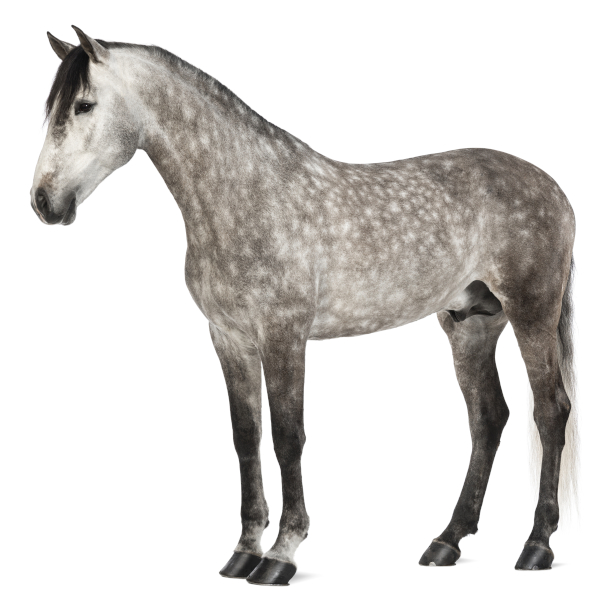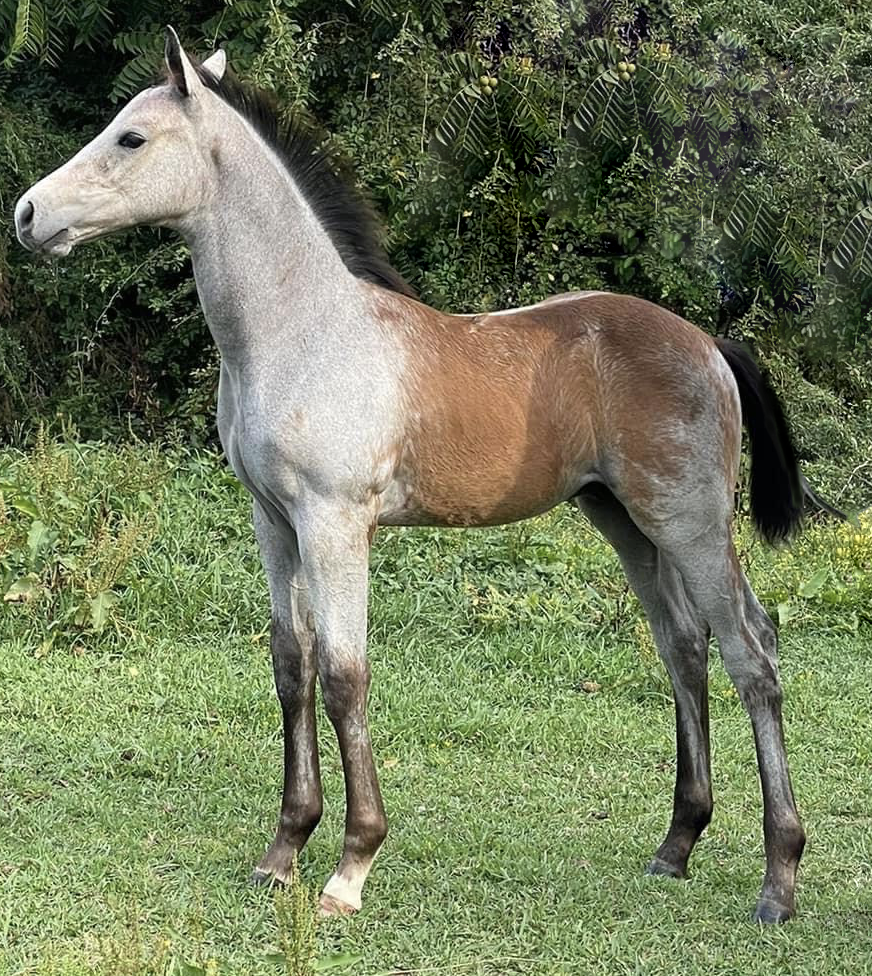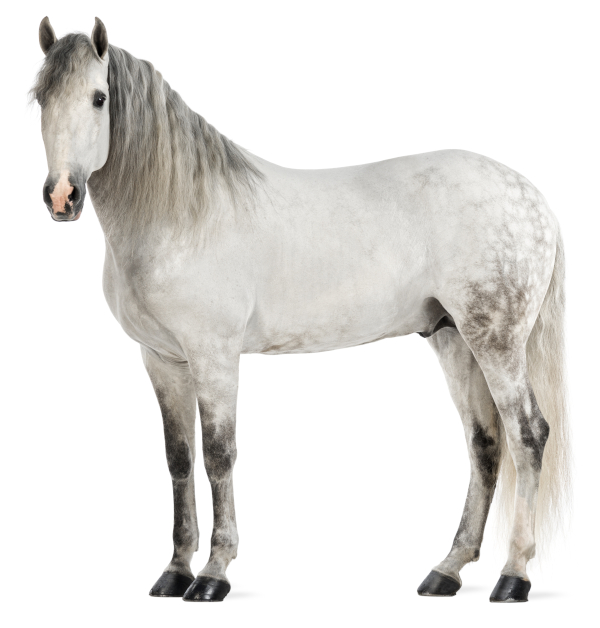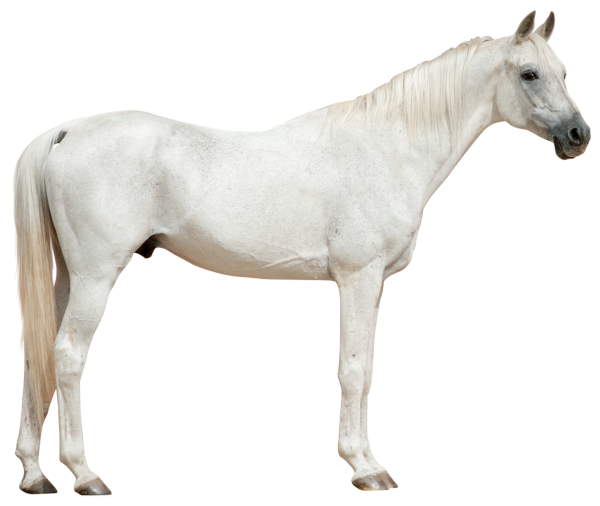Quick Summary

Click here for Price and Turnaround Time
Phenotype: The gray variant causes a progressive depigmentation of the hair, often resulting in a color that is almost completely white by 6-12 years of age, and can act on any base coat color.
Mode of Inheritance: Autosomal dominant
Alleles: Present = gray variant detected, Absent = gray variant not detected, non-gray
Breeds appropriate for testing: Many breeds

Explanation of Results:
Gray presence/absence is available as a standalone test and also tested as part of the horse coat color panel. Results are reported as:
- present which means at least one gray allele was detected and horse will gray or
- absent in which no gray allele was detected and therefore the horse will not turn gray.
Horse Coat Color Panel
$85 per animal
Full Color/Pattern Panel
$155 per animal
Shetland Pony Coat Color Panel
$100 per animal
White Pattern Panel 2
$85 per animal
Sample Collection
Horse DNA tests are carried out using cells from the roots of a hair sample (roughly 20-40 hairs).
1. Grab about 10 hairs at the base.
2. Wrap the hairs around your finger and give it a quick pull.
3. Check the ends to make sure the pulled hairs have roots.
4. Repeat the process until you have collected about 20-40 hairs with intact roots.
5. You can choose different places on the mane or tail. NOTE: For foals, we recommend pulling all hairs from the tail only.
6. Tape the hairs to the submission form and fold the form along the dotted line to protect the sample. Do not use ziploc bags as they can cause condensation that allows mold to grow on the hair.
7. Place the folded form containing the sample in a paper envelope and mail it to the laboratory.

The gray variant causes progressive depigmentation of the hair, often resulting in a coat color that is almost completely white by the age of 6-12 years. Horses that inherit progressive gray can be born any color, then begin gradually to show white hairs mixed with the colored throughout the body. Usually the first signs of gray hair can be found on the head, particularly around the eyes.
Gray is inherited in an autosomal dominant manner, meaning that a single copy of either gray allele (G2 or G3) will cause a horse to turn gray. The initial cause of graying in horses was reported by researchers at Uppsala University, in Sweden, as a 4.6 kilobase (kb) duplication in intron 6 of the Syntaxin 17 (STX17) gene. Their research hypothesized that the mutation in STX17 affects the production of melanocytes and, thus, predisposes gray horses to melanoma in addition to causing graying of the coat.
Gray horses have a high incidence of dermal melanomas that are commonly seen around the tail and head. Over 70% of gray horses older than 15 years will develop melanoma. Gray horses that are also homozygous for black (a/a genotype at the Agouti locus) have a higher risk for melanoma. Many gray horses show depigmentation of the skin around the eyes, mouth, and anus, but any additional health risks, aside from melanoma, have not been fully studied. Gray horses have also been reported as being at higher risk for ocular squamous cell carcinoma.
A 2024 study led by Dr. Leif Andersson and colleagues at Uppsala University, in collaboration with researchers at the UC Davis Veterinary Genetics Laboratory (VGL), showed that the speed of graying and melanoma risk are influenced by the number of copies of this 4.6 kb sequence, indicating the existence of two different alleles responsible for graying in horses: G2, which consists of a duplication that leads to slow graying, and G3, which is a triplication that results in fast graying and increased risk for melanoma. For more information and to test for these alleles, please visit our Gray Copy Number test page.

Gray is found in many breeds and is the predominant color of the Lipizzan breed. Using data generated at the VGL, researchers found that the G3 allele is much more prevalent across horse breeds, which may be the result of strong selection for the all-white phenotype. The slow graying G2 allele was specifically identified in 8 different breeds: Andalusian, Connemara Pony, Miniature Horse, Mangalarga Marchador, Mustang, Quarter Horse, Tennessee Walking Horse, and Welsh Pony.
The Gray Presence/Absence test is available as a standalone test and is also included as part of the Horse Coat Color Panel, Full Color/Pattern Panel, White Pattern Panel 2 and the Shetland Pony Coat Color Panel.
Testing for these gray variants can help owners identify homozygous horses (animals with two copies of any gray allele), which will always produce gray offspring. Testing can also assist in determining a foal's coat color, as gray causes a progressive loss of pigmentation. Testing also allows for selective breeding towards the G2 allele, which causes graying with a lower risk of melanoma.
